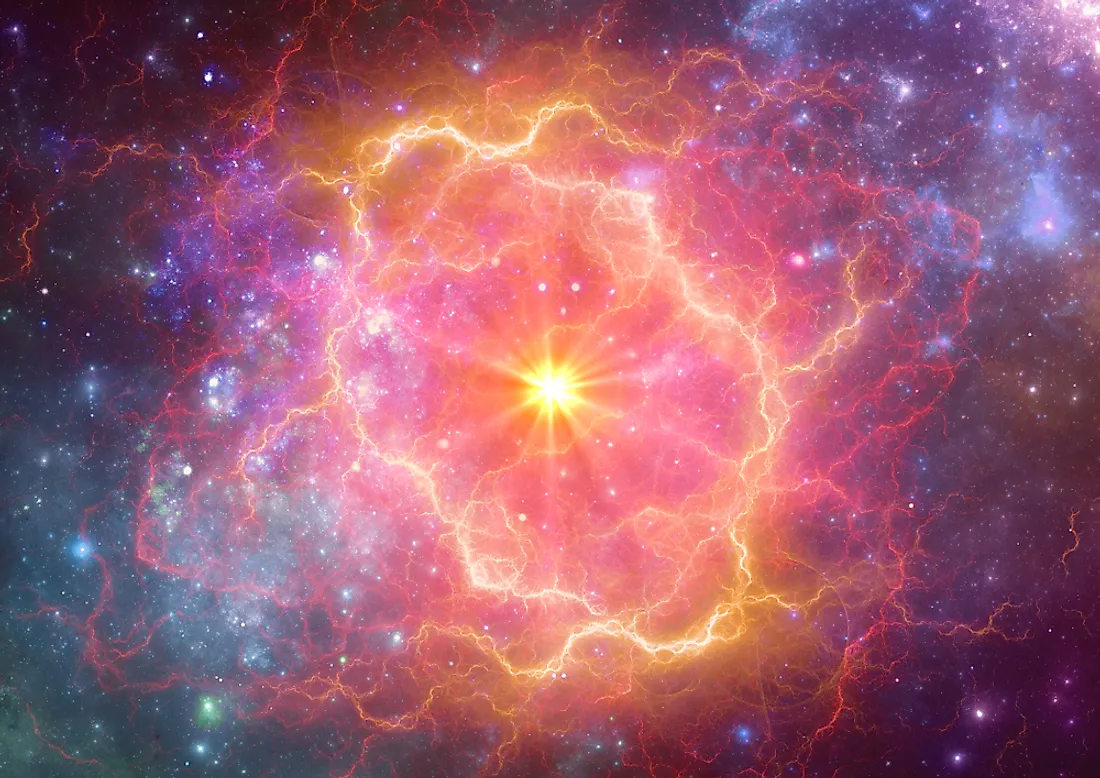What Is A Supernova?

A catastrophic explosion takes place during the final stellar evolutionary stage of a massive star. This stellar explosion is known as a supernova and appears in the sky as a sudden illumination of a star with unusual brightness. Despite being made up of billions of stars, the occurrence of a supernova in the Milky Way is quite rare. Astronomical data shows that the Milky Way experiences about three supernovas each century. A total of three supernovas have been observed in the Milky Way galaxy in history. The shockwaves from a supernova have the potential of triggering the formation of a new star. Supernovas expel almost all the material from a star at speeds going as high as 10% the speed of light, and some are so luminous that they outshine their home galaxies. However, only a few supernovas have been observed with the naked eye, with the majority being only observed using powerful telescopes.
Etymology
The term is drawn from another astronomical event, the “Nova,” which is itself derived from the Latin word “nova” meaning “new” since it was once believed that a nova represented the birth of a new star. The addition of the prefix “super” is used to amplify the supernova’s superiority both in luminosity and energy relative to that of a nova. The term was introduced in 1931 by two scientists; Fritz Zwicky and Walter Baade.
The SN 1604
The SN 1604 supernova was a stellar explosion that was witnessed between October 8th and 9th 1604. The astronomical event, which is commonly known as the Kepler’s Supernova (named after renowned 17th-century astronomer Johannes Kepler), occurred in the Ophiuchus constellation in the Milky Way. The supernova was the most recent one to have been visible to the naked eye and remained visible for 18 months. Records of its observation are found in Arabic, European, Chinese, and Korean sources. The SN 1604 is also recognized as the most recent supernova to take place in the Milky Way galaxy, with other subsequent recordings being from other galaxies.
The ASSASN-15h
The most powerful supernova in history was the recently-observed ASSASN-15h. The stellar explosion from the supernova was so powerful that its brightness was 20 times that of all the stars in the Milky Way. The astronomical event’s name is derived from the acronym of the telescope survey that led to its discovery in 2015, the All Sky Automated Survey for Supernovae. Astronomers calculate that the supernova was about 3.82 billion light-years away and stated that if the stellar explosion were 10,000 light-years away, it would have the brightness of the crescent moon.
The SN 2005ap Supernova
One of the furthest supernova to be observed was the SN 2005ap supernova that was observed through a telescope at Texas-based McDonald observatory. The supernova occurred 4.7 billion light-years away from the earth, a mindboggling distance that made it invisible to the naked eye. The supernova was observed as part of the Coma Berenices constellation. That of the ASASSN-15h Supernova only surpassed the brightness of the supernova, since the peak absolute magnitude of the SN 2005ap was calculated to be -22.7.











